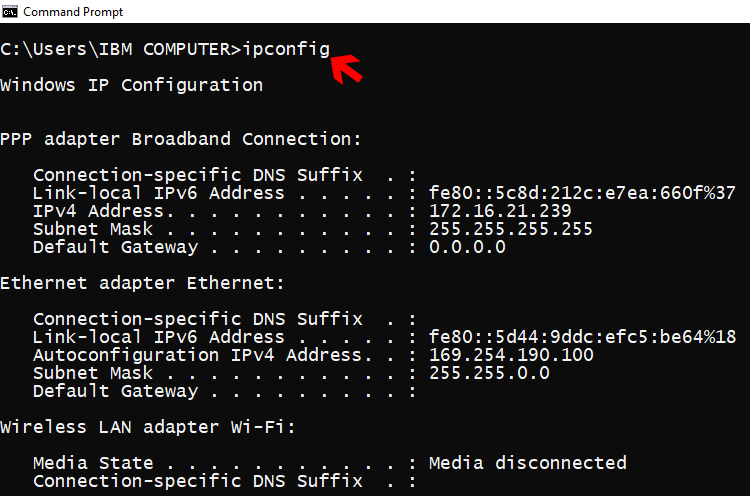
- COMMAND PROMPT COMMANDS COPY HOW TO
- COMMAND PROMPT COMMANDS COPY MANUAL
- COMMAND PROMPT COMMANDS COPY PC
- COMMAND PROMPT COMMANDS COPY WINDOWS
COMMAND PROMPT COMMANDS COPY PC
XCOPY command is used to copy files or folders from one location to another location.īesides, the XCOPY command can be used on IBM PC DOS, MS-DOS, IBM OS/2, Microsoft Windows, FreeDOS, ReactOS, and related operating systems. What is XCOPY command? In computing, XCOPY represents an extended copy, which was created as a more functional file copying tool compared with Copy command. But there is an advanced command that you can use to do that – XCOPY command. Normally, we only press Ctrl + C to copy the files and then press Ctrl + V to paste the files to another location. In order to keep your data safe, you can try to copy your files and folders to another location.
COMMAND PROMPT COMMANDS COPY HOW TO
COMMAND PROMPT COMMANDS COPY WINDOWS
Wikibooks has a book on the topic of: Guide to Windows Commands MS-DOS Commands: Microsoft Quick Reference, 4th Revised edition. ^ "OpenVOS Commands Reference Manual" (PDF).Running MS-DOS Version 6.22 (20th Anniversary Edition), 6th Revised edition. Seattle, Washington, USA: Seattle Computer Products, Inc.
COMMAND PROMPT COMMANDS COPY MANUAL

The equivalent Unix command is cp, the CP/M command is PIP. A more advanced copy command is called xcopy. Under IBM PC DOS/ MS-DOS it is available since version 1. The copy command is supported by Tim Paterson's SCP 86-DOS. The command is available in DEC RT-11, OS/8, RSX-11, Intel ISIS-II, iRMX 86, DEC TOPS-10, TOPS-20, OpenVMS, MetaComCo TRIPOS, Heath Company HDOS, Zilog Z80-RIO, Microware OS-9, DOS, DR FlexOS, IBM/ Toshiba 4690 OS, TSL PC-MOS, HP MPE/iX, IBM OS/2, Microsoft Windows, Datalight ROM-DOS, ReactOS, SymbOS and DexOS. Devices themselves may be copied to a destination file, for example, copy con file takes the text typed into the console and puts it into FILE, stopping when EOF (Ctrl+Z) is typed. For example, copy file con outputs file to the screen console. The command can copy in text mode or binary mode in text mode, copy will stop when it reaches the EOF character in binary mode, the files will be concatenated in their entirety, ignoring EOF characters.įiles may be copied to devices. If multiple source files are indicated, the destination must be a directory, or an error will result. The destination defaults to the current working directory. It is used to make copies of existing files, but can also be used to combine (concatenate) multiple files into target files. Generally, the command copies files from one location to another.


 0 kommentar(er)
0 kommentar(er)
